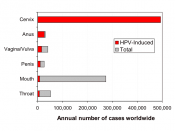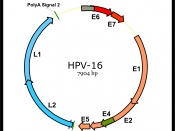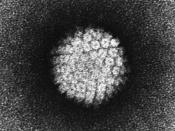The organs and tissues of the body are made up of tiny building blocks called cells. Cancer is a disease of these cells. It is important to realize that cancer is not a single disease with a single cause and a single type of treatment. There are more than 200 different kinds of cancer, each with its own name and treatment. (Encarta 04)
Although cells in different parts of the body may look and work differently, most repair and reproduce themselves in the same way. Normally, this division of cells takes place in an orderly and controlled manner. If, for some reason, the process gets out of control, the cells will continue to divide, developing into a lump which is called a tumor. Tumors can be either benign or malignant. (Encarta 04)
The cervix is the lower part of the womb (uterus) and is often called the neck of the womb.
The womb is a muscular, pear-shaped organ at the top of the vagina. The lining of the womb is shed each month, and results in bleeding called a period. These periods stop temporarily during pregnancy and will normally continue until a woman has the `change of life' or menopause. Your cervix can be seen when you have a smear and can be felt when you have an internal examination by a doctor or nurse. Close to the cervix are a collection of lymph nodes. These are small glands, about the size of a bean. (Encarta 04)
Cancer of the cervix can take many years to develop. Before it does, early changes occur in the cells of the cervix. The name given to these abnormal cells, which are not cancerous but may lead to cancer, is cervical intra-epithelial neoplasia (CIN). Some doctors call these changes precancerous, meaning that...


